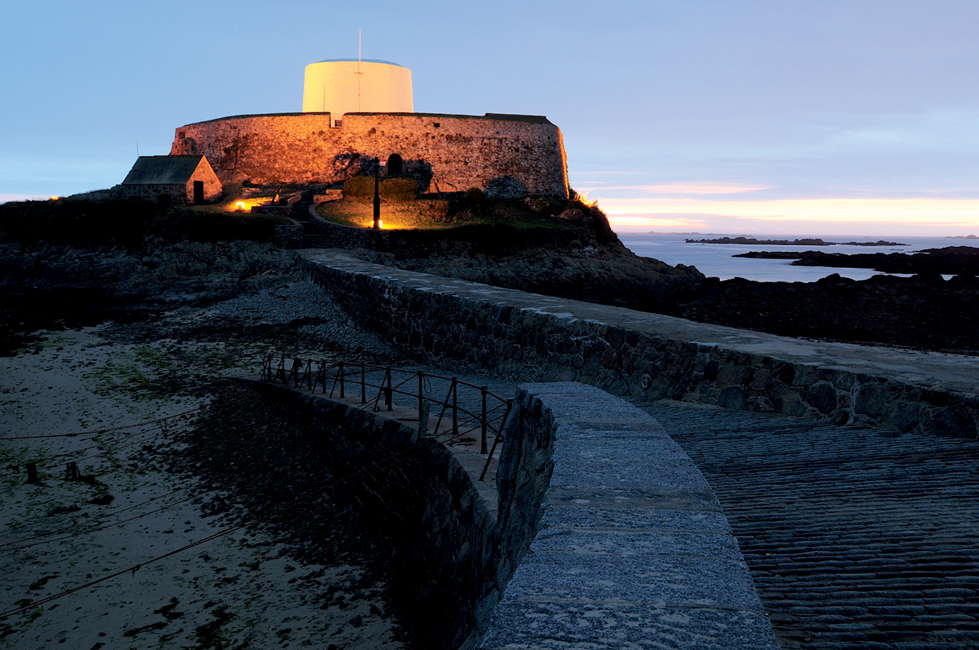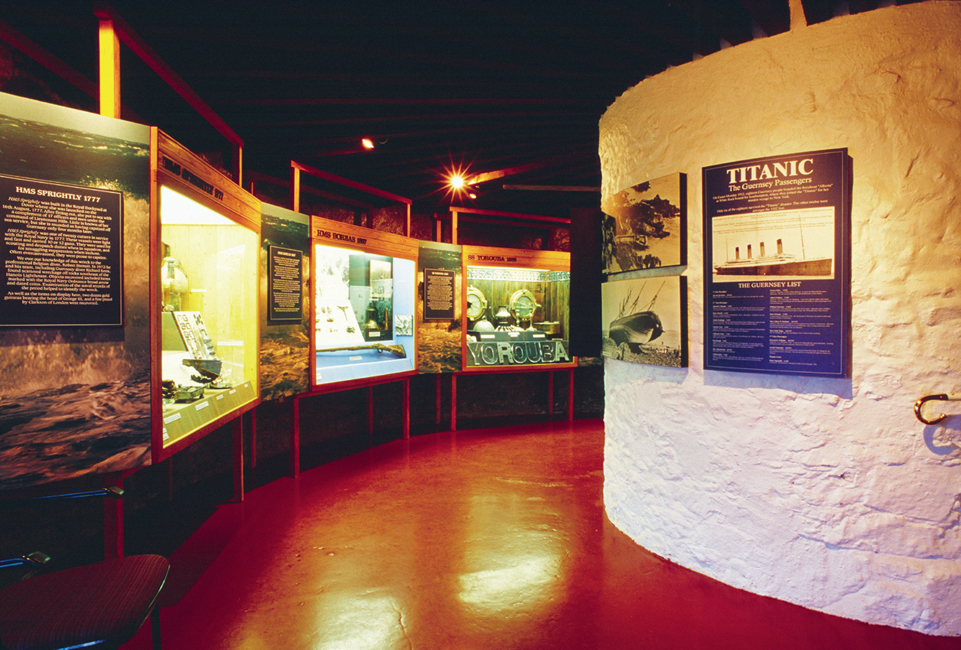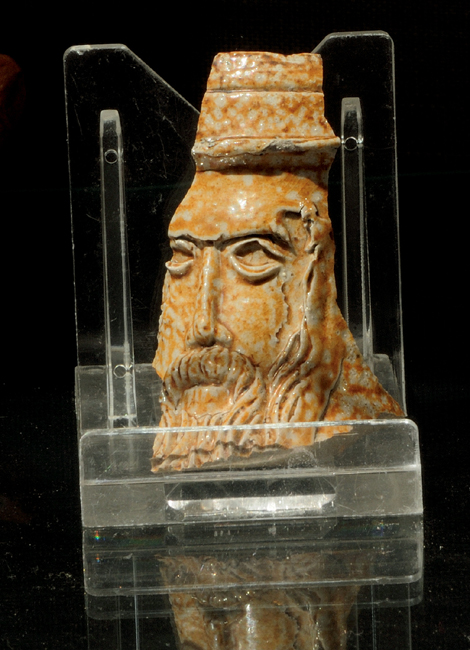When Alderney fisherman, Bertie Cosheril, pulled up a heavily encrusted musket with one of his lobster pots in 1984 he had little idea of the significance of his odd catch of the day. Further historical booty was discovered, but it was not until the early 1990s that archaeologists concluded that the items were coming from the wreck of The Makeshift, an English warship from the Elizabethan era. Over the years the sunken ship has yielded a treasure trove of artefacts. More than 1,000 items have so far been discovered, many of which have been preserved and are on display at the Alderney Society Museum.

The lighthouse on Alderney.
Mockford and Bonetti/Apa Publications

Fort Grey.
Mockford and Bonetti/Apa Publications

The Shipwreck Museum in Fort Grey.
Mockford and Bonetti/Apa Publications
Dashed upon the rocks
The treacherous rock-strewn coasts and strong currents around the Channel Islands have always posed a hazard for ships. From the earliest seafaring days two crucial trade routes passed close to Guernsey: from Britain and northern Europe to the Mediterranean and from the English Channel to America. But it was the 19th-century surge in trade that caused the largest number of shipping disasters. In bad weather captains would mistake the Channel Islands for the south coast of England and steer south, intending to head into the middle of the Channel but in fact aiming straight at the reefs. One of the worst disasters was the wreck of the railway steamer, SS Stella, which ran into fog and struck the Casquets in 1898. The boat sank within eight minutes and 105 lives were lost.
A large number of vessels were wrecked on the treacherous rocks of Les Hanois. In 1807 HMS Boreas sank with a loss of 127 lives. A cannon salvaged from the frigate was installed at Fort Grey and points to the Hanois reef where she foundered. A wreck with a happier ending was the SS Briseis, which struck a reef off Vazon Bay in 1947. The crew landed safely in lifeboats and, to the delight of the local people, a cargo of wine floated ashore. The Guernsey press reported ‘amazing scenes of drunkenness, free fights and encounters with the law’.
Lighting the way
The first lighthouse began operating on the Casquets in 1724. The lighthouse keeper was court-martialled for negligence in 1744 when the 100-gun warship, HMS Victory, disappeared in a storm, along with all 1,000 men on board. However, when divers came upon the wreck in 2008, it was 60 nautical miles from the Casquets. The construction of the Hanois Lighthouse in 1862 aided mariners negotiating the reefs. Today it throws a beam for 23 miles (37km).
The Shipwreck Museum, found within Fort Grey, tells the grim story of many of the local shipwrecks and displays their salvaged treasures. The museum could not be in a more appropriate setting: overlooking the graveyard of more than 90 recorded shipwrecks.

The remains of a jar from the collection of the Shipwreck Museum.
Visit Guernsey